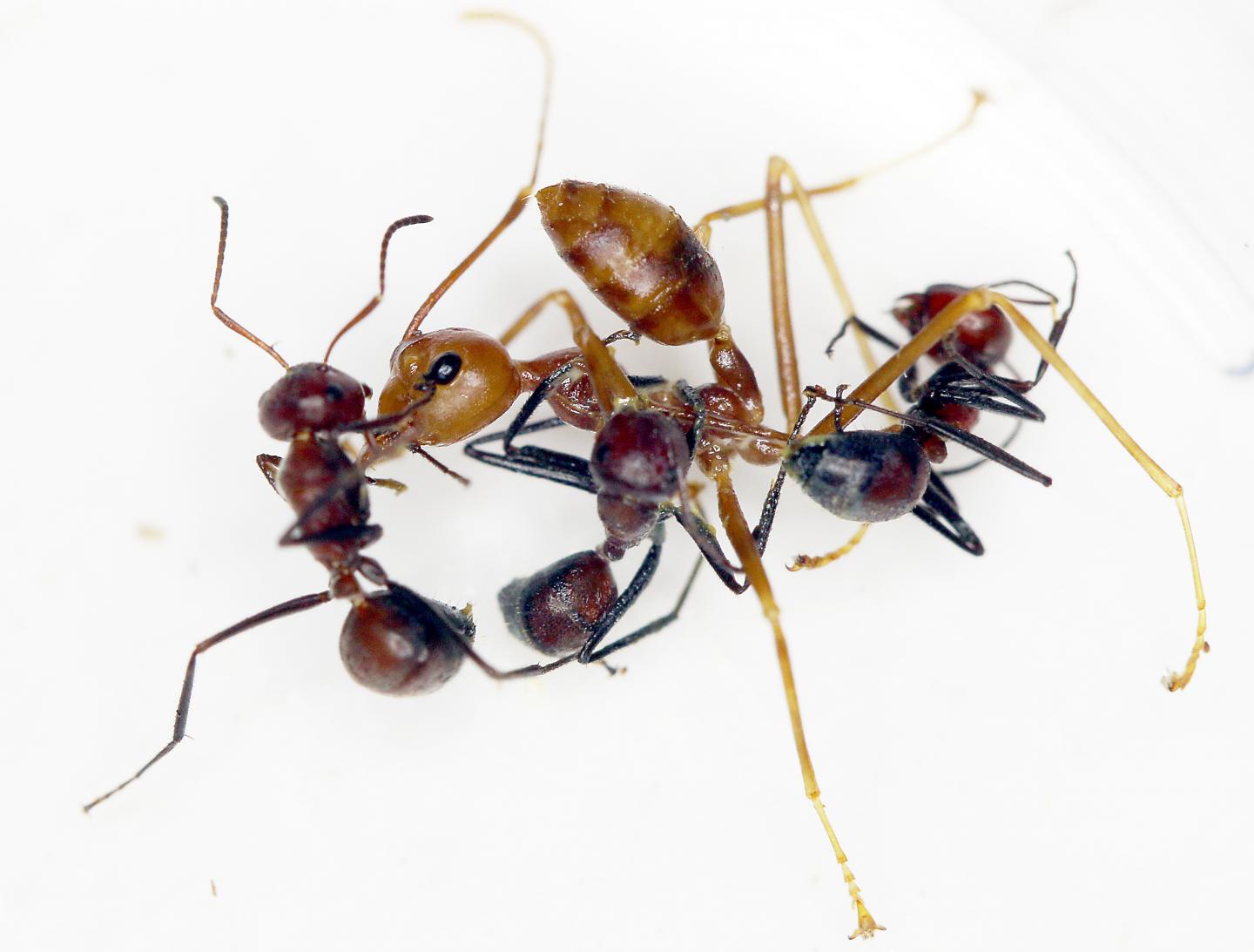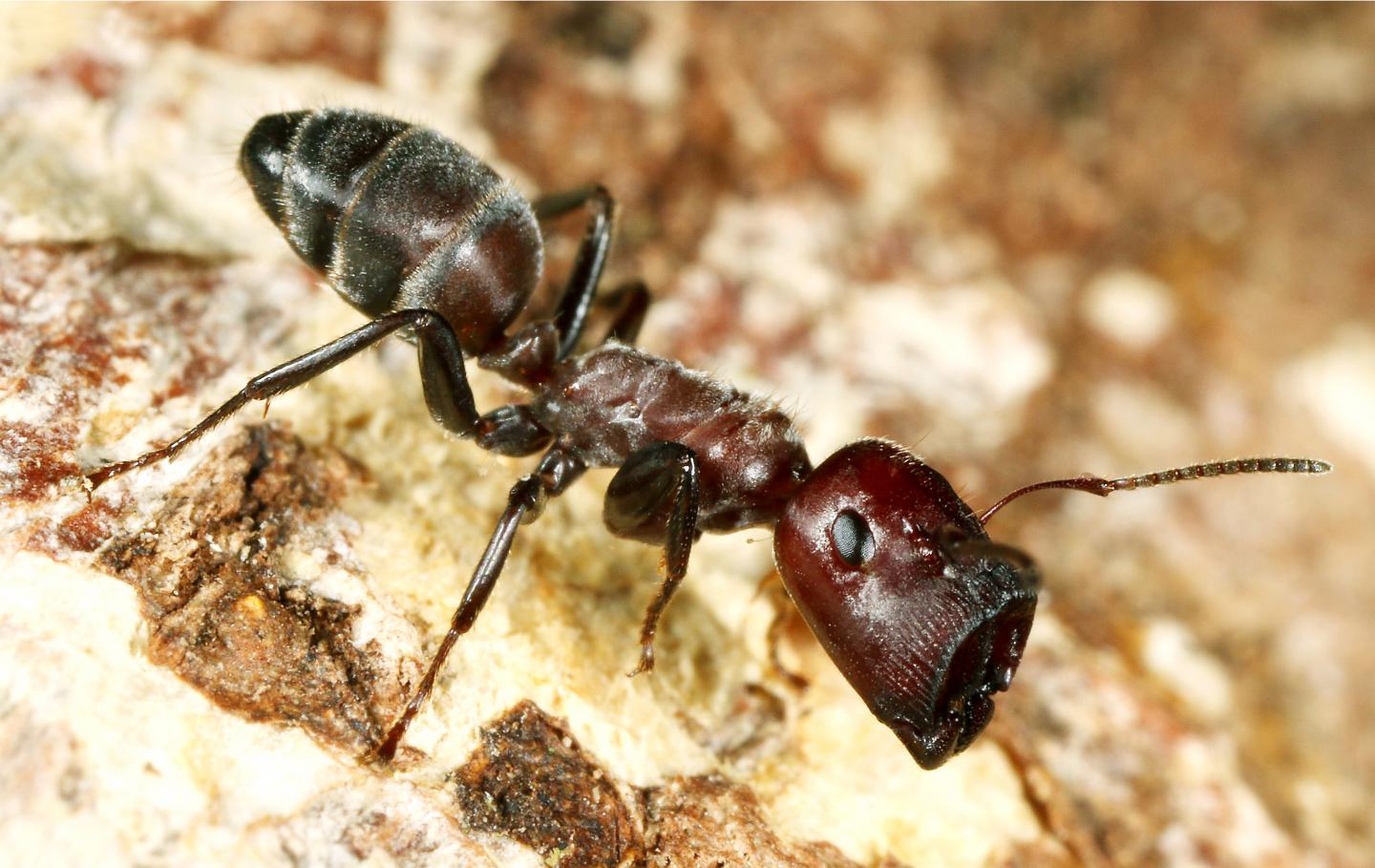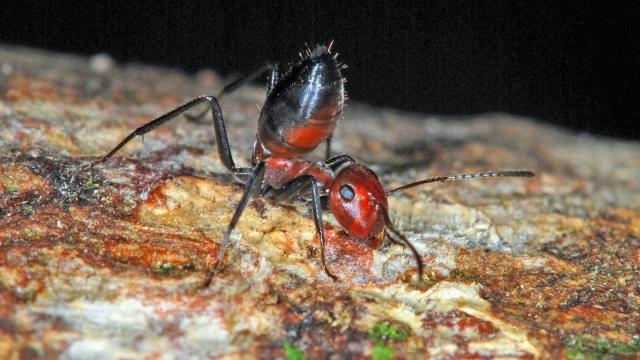When confronted by an enemy, Southeast Asian “exploding ants” do exactly what their name implies: they explode. Ignored for decades, researchers have completed a detailed survey of these enigmatic ants, discovering over a dozen species that fit into this group, including one that’s completely new to science.
Ants are capable of amazing prosocial behaviours, such as creating bridges and life rafts out of their bodies, collecting wounded comrades from the battlefield, and even administering medical care. But in terms of self-sacrifice, there’s nothing quite like the tree-dwelling “exploding ants” of Southeast Asia, who are willing to give up their lives to protect their colony.
Confronted by a threat, such as a predatory insect, a minor worker can deliberately rupture its abdominal wall. The ant doesn’t literally explode in a Michael Bay sort of way, but the desperate measure causes a sticky and toxic liquid to pour out from its bloated glands — a noxious substance that’s capable of killing the intruder. It’s a final fatal act for our exploding protagonist, but the ant is truly going out in a blaze of glory; by deploying this form of chemical warfare, the ant does its part to protect the colony.

Three exploding ants exhibiting exploding behaviour when confronted with a weaver ant. Photo: Alexey Kopchinskiy
Scientists call this “autothysis,” a suicidal behaviour that’s also been documented in some termites. Indeed, it’s the kind of Borg-like collective behaviour that can only emerge among super-social organisms. Unlike the individuals of most species, who seek to preserve and proliferate their genes, ants and termites work on behalf of the entire colony; the loss of an individual, while not ideal, is secondary to the needs of the collective, which is why ants are referred to as a superorganism. (Humans also exhibit many superorganism-like qualities, but as to whether it’s appropriate to compare humans to ants is something we’ll leave to you)
Scientists have known about exploding ants for over a hundred years. Several species were documented during the first half of the 20th century, and a new species group called Colobopsis cylindrica was created to describe them. Strangely, however, no new species was identified after 1935, owing to a dearth of evidence. That seemed weird to scientists, prompting a recent expedition to Borneo, Thailand, and Malaysia by an interdisciplinary research team from the Natural History Museum Vienna, Technical University Vienna, and other contributing institutions.
The results of their survey, published today in the science journal ZooKeys, identifies 15 separate species of exploding ants, including one that’s completely new to science. The new species is called Colobopsis explodens, but the researchers like to call it “yellow goo” on account of its bright yellow grand secretion. The researchers consider C. explodens to be a model species of exploding ant, which means it will now serve as a reference point, or an exemplar, for future research. The new species earned this designation because it’s particularly prone to self-sacrifice when threatened (minor workers of this species even blew themselves up when researchers got too close).
As noted, only minor workers explode, but the researchers also discovered other specialties among other castes. Take the “doorkeeper,” for example. Members of this odd-looking caste feature big, plug-shaped heads which they uses to block the entrance of the nest. Honestly, this thing looks like a reject from sci-fi concept art.

An exploding ant “doorkeeper” with its unusual head, which it uses to barricade the entrance of a nest.Photo: Heinz Wiesbauer
During the same expedition, the researchers also observed a flying mating pair, which hadn’t ever been seen before. And in addition to documenting the ants’ exploding behaviour in more detail, the researchers also studied their eating habits; these insects like to munch on algae, moss, fungi, dead insects, fruit, and fish.
These ants sound super interesting, but as the researchers point out in the study, there’s still lots to learn about these insects. This new paper now sets the groundwork for future research, including studies of their behaviour, chemical profile, microbiology, anatomy, and evolution.
[ZooKeys]
